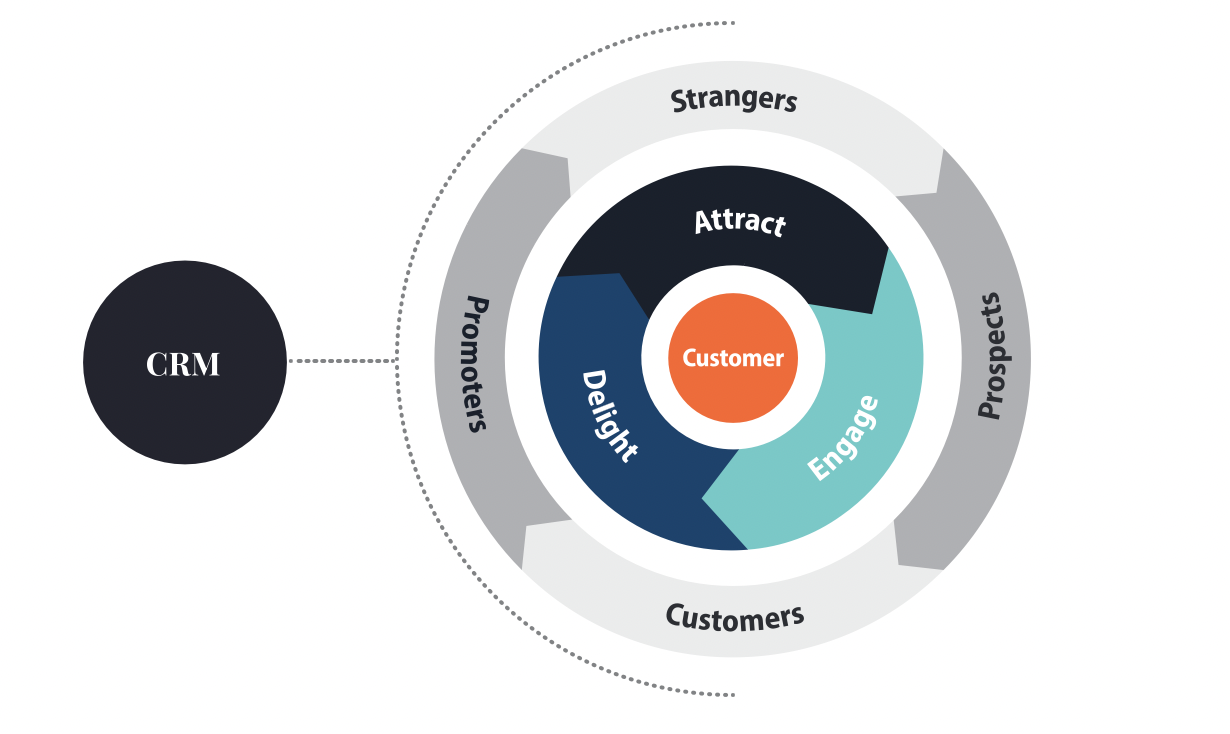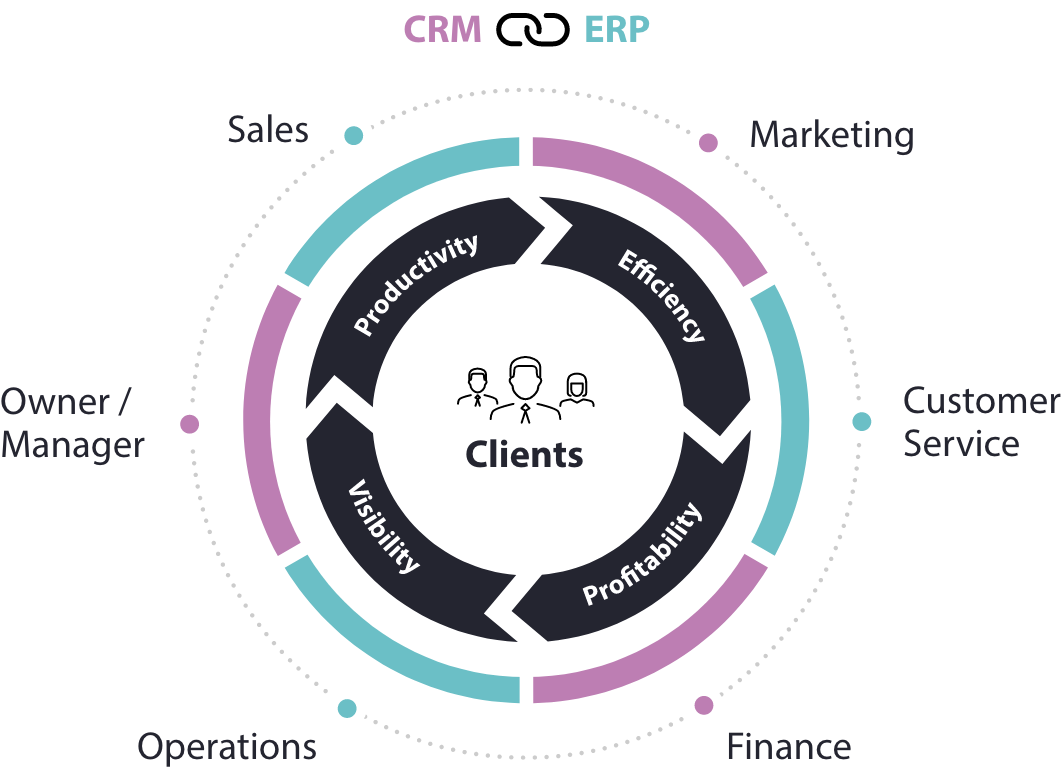In today's digital jungle, there's data everywhere - but it's often unstructured and littered across multiple platforms. Why can data silos be so destructive for businesses looking to unlock and accelerate their sales potential?
What's the data challenge in the manufacturing industry?
The manufacturing industry faces a significant data challenge regarding streamlining production lines, reducing errors and improving quality.
While developments in sensor tech, IoT, and AI are increasing the amount of data available to manufacturers, extracting data from these production systems is proving difficult for many.
But if the promise of digital transformation is to come good, manufacturers must not only access and integrate data from every part of siloed systems and supply chains. They must analyse it effectively and find ways to optimise their efficiency and quality outcomes in real-time.
Where's the data challenge in the sales and marketing process?
But, the problem of siloed data and processes holding back growth applies equally in the sales and marketing realm. Manufacturing businesses that want to sell more and target marketing activity more effectively report that a lack of data is holding them back.
- 83% of manufacturing companies recognise the importance of turning data into sales and marketing insights
- Only 22 % feel they are achieving this objective
Source: Journal of Business Research, Feb 2023
Data, data, everywhere...
Yet, ironically, businesses seem awash with potential sales and marketing information sources.
Figures show that the number of technology solutions specific to marketing increased from 150 in 2011 to over 8,000 in 2020. (Source: Chiefmartech)
When it comes to analytics and decision-making, companies often can't see the woods for the trees. As the latest research from these American academics points out, there's a lack of integration that's preventing oversight:
“The marketing function has access to massive amounts of transactional, customer, and social media data that can be used to comprehend trends, make strategic decisions, spark innovation, and drive financial performance. But many firms find themselves unable to implement it in the marketing decision-making process.”
Source: Journal of Business Research, Feb 2023
The promise of data and the prison of silos
Just consider what data the average contract manufacturing business is sitting on but often can't access and integrate to inform their strategy and tactics:
- ERP data: Contacts, firmographics, purchase history, buying behaviour
- Website data: Visits, dwell time, content preferences, interactions, content downloads
- Email data: send data, open rates, opt-out stats
- CRM data: Contact data (prospect/lead status), deal status
- Social data: Likes, interactions, shares, extended professional networks
Taken together, these sources could be giving businesses robust information about customers and prospects, including details of their:
- Readiness to buy
- Decision triggers
- Renewal processes
- Upsell opportunities
- Internal and external business networks
Companies often lack a single source of truth to bring all this data into one place.
But they also lack the strategies and practices that can help them break the silos down between their teams to sell more - and more efficiently.
Six ways to crack your sales and marketing silos
1. Choose the Right CRM
First, you must select a CRM that can ingest, maintain and report on customer data from every part of your business. A CRM platform like HubSpot can integrate tightly with your CMS and other key platforms, helping you automate data collection, lead scoring and deal tracking while handling contact management over time.
With the right CRM, data that was once stored in different places, including email and social platforms, can be bought together and analysed in one place. Without the old data silos, every part of your sales and marketing team can have access to the same information and collaborate to identify, set up and close more deals more quickly.
The right CRM can become a single source of truth around all your customer interactions and the impact of your content, enabling you to create and deliver personalised customer experiences more efficiently and with better tracking of sales outcomes. These tools can help you animate your sales cycle, helping you turn prospects into MQLs, then SQLs and, finally, evangelists on your behalf.

2. Integrate your ERP and CRM systems
ERP Systems have historically been developed to streamline business functions such as order tracking and handling, finance and supply chain management.
CRM Systems emerged later to manage customer interactions, focusing on sales, marketing, and improving customer service.
Integrating the two can provide a more complete view of a business, combining internal operational data (ERP) with customer interaction data (CRM).
Data from sales, customer interactions, inventory, and financials can be synchronised and acted on in real-time, allowing for more focused, cross-platform customer service while opening up more upsell and cross-sale opportunities.

But, despite all these benefits, businesses can still be reluctant to integrate their ERP and CRM systems due to worries about potential costs, complexity, operational disruption, data security and system compatibility.
Internal power struggles between IT and other departments can cause these efforts to stall, leading data to lie unexploited in different silos for years to come.
Suppose you are considering implementing a new CRM platform. In that case, it is essential to choose an implementation partner who can help seamlessly integrate your ERP system and also help you build a strong business case internally for the necessary work.
3. Deploy your CRM effectively
Another risk is that you'll acquire an all-singing, all-dancing set of CRM tools and be unable to deploy them effectively. Historically, companies have seen the value of these digital tools but have yet to have the time or internal skills to configure them properly.
When you're embarking on a CRM implementation, you need to ensure you have the expertise and resources in place to:
- Migrate existing data efficiently
- Set up vital integrations (EPR, socials, email etc)
- Configure new conversion workflows
- Implement lead scoring
- Define KPIs
- Set up reporting dashboards
But having all these digital tools and integrations available is not enough. You still won't be able to access the treasure within these sales and marketing data silos if your teams are not working together.
4. Align your sales and marketing teams:
Aligning sales and marketing teams involves more than shared tools; it requires a unified vision, developing joint KPIs and a content strategy covering every part of the sales cycle.
Both departments should understand each other's roles, challenges, and contributions to the overall business goals. Encourage regular joint meetings and shared projects to build understanding and trust.
Look to build a formal sales enablement process, where insight and data from the marketing side can feed directly into sales objectives - and vice versa.
5. Develop a Formal Sales Enablement Process
Creating a Sales Enablement Process is about eliminating silos to get your sales, marketing, and service teams working together intelligently. It's about pooling the data from your CRM and the expertise of all your teams to help define and build a range of helpful content and collateral. This content should be designed to answer all the questions and problems that prospects and customers might face at different points of the buying cycle.
A formal sales enablement process creates a data feedback loop to continually improve your content and fill remaining content gaps. This approach ensures that what you're creating is useful and keeps up with what customers want and need as the market and your business evolves.
It's about creating formal collaboration processes between departments that break down traditional silos and get the whole business working towards shared content, sales and revenue goals.
6. Implement Account-Based Marketing (ABM)
Implement an ABM strategy where sales and marketing collaboratively focus on key accounts with personalised campaigns. This approach requires deep integration and coordination between the two teams as they work together to identify target accounts, develop customised content, and execute tailored marketing and sales strategies.
Conclusion
While digital tools and integrations are foundational in breaking down data silos, the real success lies in transforming the way sales and marketing teams collaborate to build more effective sales and marketing strategies.
Organisations can effectively leverage new digital infrastructures to achieve efficient sales and marketing operations by fostering a culture of unity and shared purpose.
Otherwise, your newly accessible data will remain unused and unexploited for years.


